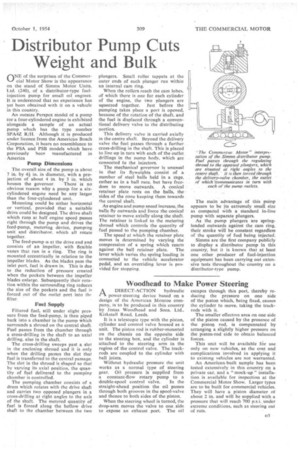Woodhead to Make Power Steering
Page 67

If you've noticed an error in this article please click here to report it so we can fix it.
DIRECT-ACTION hydraulic Ai power-steering device based on a design of the American Monroe company, is to be produced in this country by Jonas Woodhead and Sons, Ltd., Kirkstall Road, Leeds.
It is a telescopic type with the piston, cylinder and control valve housed as a unit. The piston rod is rubber-mounted on the chassis on the opposite side to the steering box, and the cylinder is attached to the steering arm in the region of the control valve. The trackrods are coupled to the cylinder with hall joints.
Without hydraulic pressure the unit works as a normal type of steering gear. Oil pressure is supplied from a constant-flow rotary pump to a double-spool control valve. In the straight-ahead position the oil passes through both grooves in the spool-valve and thence to both sides of the piston.
When the steering wheel is turned, the drop-arm moves the valve to one side to expose an exhaust port. The oil escapes through this port, thereby reducing the pressure on one side of the piston which, being fixed, causes the cylinder to move, taking the trackrods with it.
The smaller effective area on one side of the piston caused by the presence of the piston rod, is compensated by arranging a slightly higher pressure on the piston-rod side to obtain balanced forces.
This unit will be available for use only on new vehicles, as the cost and complications involved in applying it to existing vehicles are not warranted.
An American-built sample has been tested extensively in this country on a private car, and a " mock-np " installation is available for inspection at the Commercial Motor Show. Larger types are to be built for commercial vehicles. They will have a piston diameter of about 2 in. and will be supplied with a pressure that will reach 700 psi. under extreme conditions, such as steering out of ruts.




























































































































































